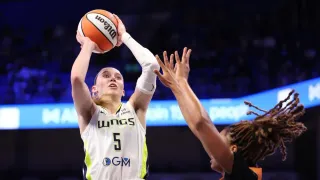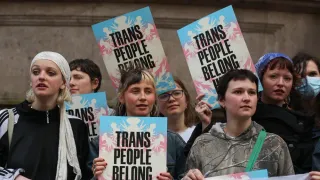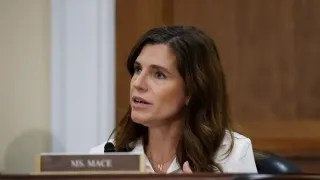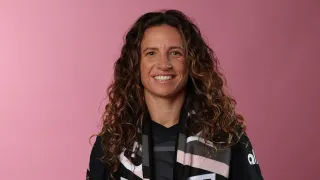
Oct 31
All Rise and Shine: Lambda Legal’s Digital Uprising Puts the Queer Community on Trial—For Hope
READ TIME: 3 MIN.
Courtrooms begin with a simple phrase: “All rise.” But for Lambda Legal—the oldest and largest LGBTQ+ legal advocacy group in the U.S.—those two words are now a battle cry echoing far beyond mahogany benches and marble halls. This October, Lambda Legal unleashed its “All Rise” campaign, a digital-first push that is part legal defense fund, part culture-shaking pep rally, and part viral storytelling bonanza. The mission? To keep queer lawyers in the courtroom, and keep our community’s rights off the chopping block as the Trump administration ramps up its anti-LGBTQ+ agenda.
The backdrop isn’t just political—it’s personal. Nearly 2,000 anti-LGBTQ+ bills have hit state legislatures in the past two years, with 230 already law in 27 states. Marriage equality, trans rights, HIV care, and parental recognition are all under siege. Lambda Legal, whose lawyers average 60+ active cases at any time, is fighting those attacks in 24 states and on the federal stage, wielding litigation like a shield and a sword.
“This is a break-the-glass moment,” Lambda Legal CEO Kevin Jennings declared in an interview with The Advocate, signaling the seriousness of the threat while channeling the community’s grit. Jennings isn’t new to crisis, but the scale of the current attacks—coupled with a Supreme Court poised to hear bans on trans student athletes—has forced Lambda Legal to innovate. The “All Rise” campaign isn’t just a fundraiser; it’s a lifeline and a pride-fueled promise.
“The attacks on our community are happening at every level. In the last four years, every state has had an anti-LGBTQ+ bill introduced and 230 have become law in 27 states – more than half the country,” Jennings said. “Lambda Legal is fighting back in 24 states and at the federal level. We are the LGBTQ+ community’s last line of defense. During the first Trump administration, Lambda Legal sued to block his executive orders and policies – and won 86% of the time. So far in the second Trump administration, we have filed 6 suits and notched 4 victories, with 2 still pending. We are used to tough fights and we know how to win them. I want to make it clear to everyone in our community – Lambda Legal has your back.”
If Lambda’s previous campaigns were courtroom dramas, “All Rise” is more RuPaul’s Drag Race meets Law & Order: SVU. The campaign launches with a star-studded lineup of queer creators—Under The Desk News, Rose Montoya, Pattie Gonia, Isaias Hernandez, Blair Imani, Jesse Sullivan, Chella Man—turning emotional testimonials into viral video moments. The creative direction comes courtesy of Accompany Creative, an award-winning agency known for mission-driven storytelling and pro bono firepower.
From TikTok to Instagram, Lambda Legal’s “influencer blitz” is designed not just to inform, but to galvanize. The campaign’s videos feature trans military members, LGBTQ+ elders, HIV-positive advocates, and queer families—real people whose rights hang in the balance. Lambda Legal attorneys narrate scripts that channel both dignity and defiance, making the legal jargon feel like part of our living, breathing queer history.
For many in the LGBTQ+ world, the past few years have felt like watching hard-fought wins unravel in slow motion. The “All Rise” campaign insists that despair is not an option. Lambda Legal’s recent $285 million “Unstoppable Future” fundraising blitz—more than $100 million over its initial goal—ensures resources for both the immediate fight and long-term generational change. Thirty percent of those funds—roughly $80 million—are earmarked for current, aggressive litigation. The rest builds a legacy pipeline so that future generations of queers don’t have to relive these battles.
The stakes? This year alone, 59 anti-LGBTQ+ laws have passed and six executive orders have targeted LGBTQ+ rights and people living with HIV/AIDS. Opponents are raising hundreds of millions to push their agenda. Lambda Legal is stretching every dollar, every influencer, every meme, and every legal precedent to maximum impact.
If there’s a message woven through “All Rise,” it’s that queer liberation is not just legal—it’s lived. The campaign’s tone is urgent but never defeatist, inclusive but never diluted. It’s a rallying cry for every trans kid benched by discriminatory sports bans, every HIV-positive adult denied care, every family fighting for recognition. Lambda Legal asks us not just to donate, but to stand up—literally, metaphorically, and digitally—so that equality isn’t just a court order, but a cultural fact.
What makes “All Rise” special is how it turns the courtroom’s command into a communal ritual. To rise is to refuse. To rise is to remember. To rise is to reach for a future where queer joy isn’t conditional, and queer safety isn’t negotiable.
For those who feel exhausted, invisible, or overwhelmed, Lambda Legal’s message is clear: “We have your back.” And for those ready to fight, fund, and celebrate queer resilience, “All Rise” is your invitation.






